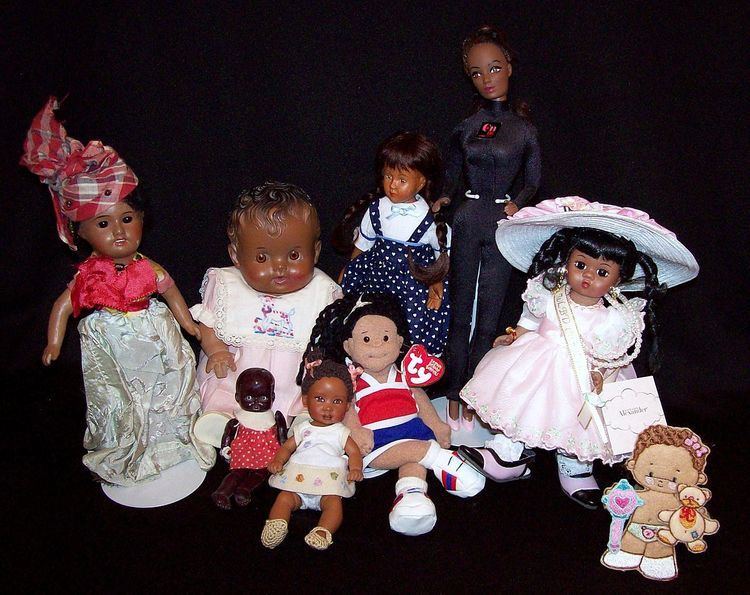 | ||
A black doll is a dark-colored inanimate representation of a dark-skinned person. Representations, both stereotypical and realistic, fashioned into playthings, date back centuries. More accurate, mass-produced depictions are manufactured today as toys and adult collectibles.
Contents
Media
Media used to create black dolls include cloth, papier-mâché, paper, china, wood, bisque, composition, hard plastic, vinyl, resin, porcelain, silicone, and polymer clay. Cloth rag dolls made by American slaves served as playthings for slave children. Early mass-produced black dolls were typically dark versions of their white counterparts.
European manufacture
Several 19th-century European doll companies preceded American doll companies in manufacturing black dolls. These predecessors include Carl Bergner of Germany, who made a three-faced doll with one face a crying black child and the other two, happier white faces. In 1892, Jumeau of Paris advertised black and mulatto dolls with bisque heads. Gebruder Heubach of Germany made character faces in bisque. Other European doll makers include Bru Jne. & Cie of Paris, Steiner, Danel, Société Française de Fabrication de Bébés et Jouets (S.F.B.J.), and Kestner of Germany.
American manufacture
American companies began including black dolls in their doll lines in the early 1900s. Between 1910 and 1930, Horsman, Vogue, and Madame Alexander included black dolls in their doll lines. Gradually other American companies followed suit.
Beatrice Wright Brewington, an African American entrepreneur, founded B. Wright's Toy Company, Inc. and mass-produced black dolls with ethnically correct features. Also an educator, Wright began instructing girls in the art of making dolls in 1955.
During the 1960s and in the aftermath of the Watts Riots in Los Angeles, California, Shindana Toys, a Division of Operation Bootstrap, Inc., is credited as the first major doll company to mass-produce ethnically-correct black dolls in the United States. Their "dolls made by a dream" with realistic African facial features remain popular among black-doll collectors.
Other popular collectible black dolls include manufactured play dolls past and current, manufactured dolls designed for collectors by companies such as Madame Alexander and Tonner Doll, artist dolls, one-of-a-kind dolls, portrait dolls and those representing historical figures, reborn dolls, and paper dolls.
